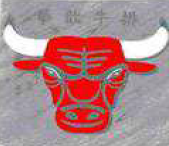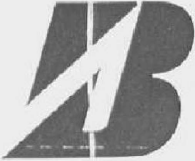table of contents
The significance of knowing foreign copyright legal systems
Regarding copyright, rights basically arise at the moment of creation in any country, and no special procedures are required to enjoy them (non-formal principle). In addition, if you are a citizen of a country that is a member of the Berne Convention for the Protection of Copyrights (this includes not only natural persons, but also legal entities such as companies), the works you created may be published in Japan. Regardless of whether or not it is a copyrighted work, it is a work worthy of protection under Japanese copyright law. In this case, if you seek protection in Japan for a work created in a foreign country, Japanese copyright law will apply.
So, what if you want to seek protection in a foreign country for a copyrighted work created in Japan? In this case as well, the copyright laws of the country in which you wish to seek protection will apply as before. Now that the information society has progressed and all kinds of information can be easily accessed through the Internet, it can be said that the number of cases in which protection of copyrighted works is sought in foreign countries has increased more than ever before. Is it not?
Considering this, it is also important to understand the copyright system in foreign countries. Also, depending on the country, by obtaining copyright registration,
① It can serve as advantageous evidence when filing a lawsuit based on copyright,
②Furthermore, if the copyrighted work is a figure, etc., the effect of excluding similar trademarks from being registered in the country concerned can be obtained.
Sometimes it is.
Here, we will provide an overview of the copyright system in foreign countries, which has such important meaning.
US copyright system
first
The United States used to adopt a formalism system and was not a party to the Berne Convention issued in 1886. However, it joined the convention in 1988.
The following are the characteristics of US copyright law when compared to Japan.
- ① Copyright notice
- ② Copyright registration
- ③ Right to terminate copyright transfer contract/license contract
- ④ Existence of the legal doctrine of fair use
- ⑤ Absence of neighboring rights system
About copyright notice
Before accession to the Berne Convention mentioned above, displaying a copyright notice was a requirement for copyright protection. After acceding to the Berne Convention, copyright notice is no longer a protection requirement, but doing so makes it possible to exclude infringers from claiming that they were unaware of the existence of copyright.
Copyright notice method
- Other than records: © Publication year + Copyright holder
- Record: ℗ Year of publication + Copyright holder
About copyright registration
①Registration matters
-
- Creation of works (obtaining copyright) ⇒ Not available in Japan
- Copyright transfer/license ⇒Also available in Japan
②Procedures for registration of copyrighted works (registration related to the creation of copyrighted works)
-
- Subject requirements: copyright holder or exclusive rights holder of the work
- procedural requirements
(i) Application form
(ii) Payment of works
(iii) Fees
③Effects of registration
-
- Presumed effect of copyright ownership, etc. = prima facie proof
- Right to claim statutory compensation = No proof required
- Right to claim compensation for attorney fees = no proof required
④Period until registration
- About 9 month
*There is an accelerated examination system in which the examination can be completed in 5 to 10 days, but special circumstances such as pending litigation and additional fees are required.
- Previously, registration was a requirement for filing a lawsuit, but after acceding to the Berne Convention, registration is now required only for U.S. copyrighted works.
Right to terminate transfer/license agreement
Authors can unconditionally terminate copyright transfer and license agreements.
No exceptions are made in the case of works made for hire or rights granted by will.
Existence of the fair use doctrine
In order to encourage the use of copyrighted works by the general public, there are regulations in Japan that restrict copyright rights. However, the Japanese Copyright Act only provides individual provisions for each type under Article 30 and below. On the other hand, in the United States, there is a more common right restriction clause called the fair use doctrine.
- Citations for criticism, commentary, reporting, and research
⇒In Japan, equivalent to Article 32 - Time shifting (recording and watching later)
- Parody work
- Reproduction for reverse engineering
⇒Not available in Japan - Quote for comparative advertising
⇒Not available in Japan
Absence of neighboring rights system
Neighboring rights can be said to be rights enjoyed by those who are not directly involved in the creation of a work, but who contribute to its distribution. Specifically, this applies to rights enjoyed by performers (singers, actors, etc.), record producers, broadcasters, and cable broadcasters, but this system of neighboring rights does not exist in the United States. Instead, in the United States, "sound recordings" are protected as copyrighted works, just like linguistic works and musical works, and these are considered to be equivalent to neighboring rights.
Indian copyright system
first
The Indian Copyright Act (enacted in 1957) was originally based on the British Copyright Act. India is a signatory to the Berne Convention for the Protection of Literary and Artistic Works (hereinafter referred to as the "Berne Convention"), and is also a party to the Universal Copyright Convention (1952), which protects performers, phonogram producers and broadcasters. We are a party to the Rome Convention for the Protection of Rights (1961) (hereinafter referred to as the "Rome Convention").Furthermore, as a member of the World Trade Organization, we are a member of the Agreement on Trade-Related Aspects of Intellectual Property Rights (hereinafter referred to as the "TRIPS Agreement"). ), and the copyright law in India is based on this standard.
Additionally, in 2012, the Copyright Amendment Act was enacted to clarify the above-mentioned Indian Copyright Act, resolve operational issues, and address new issues that have emerged with the spread of digital technology and the Internet. Amendments have been proposed to address this issue. The bill further consolidates the provisions of the Indian Copyright Act into two Internet treaties of the World Intellectual Property Organization (WIPO): the WIPO Copyright Treaty (WCT) (concluded in 1996) and the WIPO Performances and Phonograms Treaty (WPPT). We also require that it be compliant with.
Registration system
There are different procedures for copyright registration in India depending on how the copyrighted work is used. In other words, if a copyrighted work is used in connection with goods or services (as a trademark), the following procedures are required as part of an investigation by the Trademark Office before filing an application for copyright registration.
(a) Search by the Trademark Office
- ①The existence of registered trademarks by others that are the same as or similar to the copyrighted work will be investigated across all categories.
- ② If a trademark identical to or similar to the above exists, the local agent will be notified.
- ③ If the trademark registration is by the copyright registration applicant, we will respond by asserting that fact (within 15 days).
- ④If the above claim by the local agent is accepted, the Director of the Trademark Bureau will issue the certificate necessary for filing a copyright registration application.
(b) Applying for a copyright registration application to the Copyright Office
- ① In the application form, state that the item will be used in connection with the item, and attach the above certificate.
- ② If there is a problem with the registration (such as incomplete application documents), an examination report will be issued and the report will be sent to the local agent.
- ③After that, the agent will take the necessary measures and the product will be registered.
(c) Application procedure at the Copyright Office
- ①Registration target
・Contains computer programs (included in linguistic works)
・Name or title of the work, name and address of the author/publisher or copyright holder
・Other prescribed matters
- ②Registration applicant
・Authors, publishers, copyright holders and interested parties
・Japan's work-for-hire system (this website Copyright system - works and authors ”), the author is only the creator of the work.
- ③Period until registration
・About 18 to 24 months
*It will be shortened if it is not investigated by the Trademark Office.
Effective use of registration system
Based on the Berne Convention, copyright registration is not a condition for acquiring copyright rights, which is the same as in Japan and other Berne Convention member countries.
However, the Indian Copyright Act provides that the Copyright Register shall be prima facie evidence of the content herein. In other words, a copy or abstract of the details recorded in the Copyright Register, certified and stamped by the Director of the Copyright Bureau, can be accepted as evidence in all courts. Therefore, the Copyright Registry is considered to be an effective means of proving effective dates and ownership of rights in practice.
Additionally, Article 11(3) of the Indian Trademarks Act provides that trademark registration applications will be rejected under the Copyright Act. Although copyright registration is not a condition for the application of the provisions regarding the reasons for refusal, the existence of copyright registration is effective in excluding applications for trademark registration by others that are identical or similar to the logo mark, etc. that corresponds to the copyrighted work. Needless to say, I work.
It is said that the number of copyright registrations is on the rise. This is thought to be because copyright infringement tends to be recognized more easily than other intellectual property rights, and the amount of damages is generally said to be high (JETRO, ``ASEAN India Intellectual Property Protection (From "Handbook" page 12).
Dynamic and super-dynamic injunctions
In India, there are many cases of illegally distributing video content. In India, a measure called a dynamic injunction is being taken against such illegal content distribution.
A "dynamic injunction" is effective not only against a person who operates a website that infringes on the complainant's intellectual property rights, but also against businesses that operate similar mirror sites. refers to an injunction that authorizes As a result, if the complainant discovers not only the website intended by us, but also a mirror site similar to this or a domain change of the infringing site, the complainant will be able to identify the new accused infringer without filing a new lawsuit. protection can be obtained by extending the effect of the initial injunction.
This practice was approved by the Delhi High Court in February 2019, but since then, Indian courts have been increasingly willing to grant dynamic injunctions. Furthermore, recently, the Delhi High Court granted a ``Dynamic + Injunction'' that allows ``movies and dramas produced in the future'' to be protected (August 2, 2023). While a normal dynamic injunction covers illegal distribution sites that are subject to the injunction, including mirror sites and distribution after domain changes, super-dynamic injunctions currently Content that does not exist but will be created in the future is also subject to the injunction.
A super-dynamic injunction is a powerful countermeasure for copyright holders against illegal distribution, but since it extends protection to content that does not currently exist, it may unnecessarily expand the scope of application. , as questions have been raised about the scope of its application, so it is likely that the debate will progress in the future regarding its scope of application.
China's copyright system
first
The enactment of China's Copyright Law began in 1979 and was enacted in 1991, more than ten years later, amidst great confusion.
The first revision was made in 2001 in line with China's accession to the WTO, and the second amendment was made in 2010 (current Copyright Law).
Since both of these measures were implemented passively in response to the international community, a complete revision (third revision) is currently planned in line with the domestic situation in China and the need for more active copyright protection. I am.
Registration system
China, like Japan, has adopted a system (principle) in which rights are generated and protected upon the creation of a work, but a copyright registration system was started in 1995 to further protect copyright. Masu.
(a) Effects of registration
When a copyright dispute arises, by submitting a copyright registration, the matters registered for that copyright will be treated as prima facie proof (proof that appeals to the judge's opinion). Masu. This helps reduce the burden of proving the time of creation when the earlier creation of a copyrighted work is disputed.
(b) Application procedure
- ①Register your identity in the Copyright Center system
- ② Fill out the Copyright Center system, print the written application form, and submit it to the Center.
- ③Submit an application for copyright registration of the work, a right guarantee, a signature on ownership of the right, a description of the work, and a sample of the work (if you have delegated a power of attorney to an agency) to the registration agency.
- ④Issuance of registration certificate and public announcement on the Internet after examination
(c) Period until registration
You can receive your registration certificate within 30 working days (approximately 1 to 2 months) from the date of application.
Effective use of copyright
(A) Relationship with trademark rights
Article 31 of the Chinese Trademark Law stipulates that "an application for trademark registration shall not prejudice the existing prior rights of others," and these prior rights include copyrights.
For example, in Japan, it is difficult to recognize the copyright property of a logo mark, but in China, if a certain level of originality is recognized, the copyright property of a logo mark is recognized. Therefore, by registering a copyright for a logo, if the logo is illegally registered as a trademark by someone else, it is possible to easily file an opposition or request for invalidation based on the copyright registration. It becomes.
≪Actual disputed cases≫
(i) Chicago Bulls Mark Objection

(Applied Trademark No. 195726 Trademark [268 Trademark])

(NBA owned Chicago Bulls mark)
Although the NBA had not registered the copyright for the mark, the Beijing Municipal Higher People's Court judged the evidence comprehensively and recognized the NBA's prior copyright in the mark. The above 268 trademarks are deemed to infringe on the copyright, and the decisions of the Trademark Office, the Review and Adjudication Board, and the Beijing Municipal First Intermediate People's Court that approved the registration of the above 268 trademarks have been canceled.
*Copyright ownership is determined by comprehensively examining trademark registration certificates, company regulations, etc. If you do not have a copyright registration certificate, you must submit multiple materials for copyright proof. Furthermore, the lower court in which this opposition was filed has ruled that ``a trademark registration certificate cannot prove copyright ownership.'' A copyright registration certificate allows you to prove copyright more directly or more easily than other materials.
(ii) Request for invalidation trial by Bridgestone

(Applied Trademark No. 3042469)

(Prior copyright owned by Bridgestone)
Bridgestone Corporation requested an invalidation trial against the registration of trademark application No. 3042469. At the trial, Bridgestone submitted a copyright registration certificate as evidence that the above logo was a prior copyright, and the registration of the applied trademark was canceled on the ground that it infringed Bridgestone's copyright.
(b) Relationship with computer software
China also started a computer software copyright registration system in 2001.
When applying for registration, submit documents such as a registration application form, software identification materials, and a certificate of complete history (and a power of attorney if you have delegated it to an agency) to the registration agency. After the formal examination of the application documents, the registration fee is paid, and after the substantive examination, a registration certificate is created and published on the Internet.
As with regular copyrights, the period to receive the certificate is within 30 working days (approximately 1 to 2 months) after application.
If confidential information is included in the identification materials, you can select an exception submission/save method and black out the confidential parts.
<Contents within the page>
Copyright Support Office Use of copyrighted works Copyright registration/contract foreign system Trouble avoidance